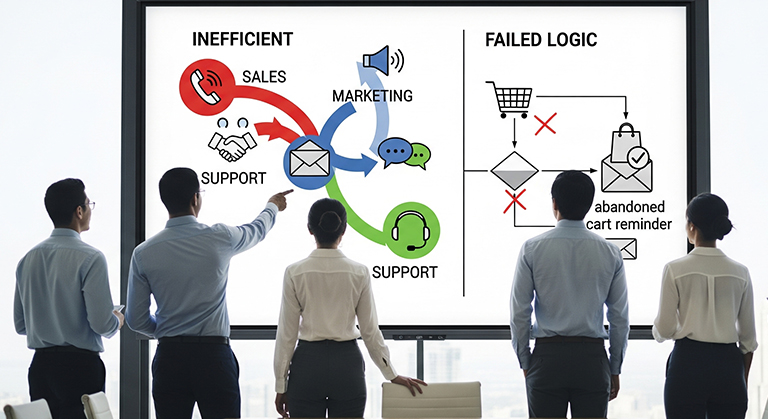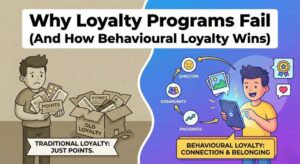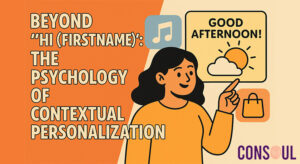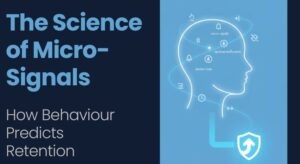Why poor logic and overlap – not platform choice – leads to drop-offs and fatigue.
Customer Relationship Management (CRM) tools are everywhere. From enterprise-level suites to agile, startup-friendly platforms, companies today have unprecedented access to sophisticated tools that promise to automate personalization, boost engagement, and drive retention. Yet, despite all this technology, too many CRM journeys still underperform or outright fail.
So why does this happen? The uncomfortable truth is: it’s not the tool, it’s the logic behind the journeys.

Introduction: The Myth of the CRM Tool as the Culprit
When CRM performance dips, the first instinct for many teams is to blame the platform. “Maybe this tool isn’t good enough.” “Perhaps we need to migrate to a more advanced solution.” This reaction is understandable — platforms market themselves aggressively, and it’s tempting to believe that success is just one software upgrade away.
But this “platform switching” mindset creates a false sense of progress. The reality? Whether it’s Salesforce, HubSpot, Clevertap, WebEngage, MoEngage, or any other modern platform, the tools themselves are more than capable. The problem lies elsewhere: in the logic, structure, and orchestration of journeys designed within these tools.
Across industries and clients, we’ve seen the same story repeat itself: diverse platforms, but common failure patterns.
Poor Journey Logic: The Invisible Villain
At the heart of most failed CRM programs is poor journey logic. This is less about whether a journey has been built, and more about how thoughtfully it has been designed.
Poor logic often manifests in:
- Redundant flows that repeat the same message across journeys.
- Dead-end automations with no exit criteria.
- Broad, poorly defined triggers that treat vastly different customer segments as identical.
A frequent misconception is that automation alone equals personalization. In reality, automation without intentionality often creates irrelevant touchpoints that feel robotic rather than tailored.
For instance, we’ve seen businesses where a user who makes a purchase still receives a “complete your purchase” reminder because the journey logic didn’t account for order completion as an exit condition. Sophisticated tooling won’t fix that oversight — good logic will.
Overlap & Redundancy: Journey Cannibalization
Even well-intentioned CRM teams can fall into the trap of journey cannibalization: multiple journeys targeting the same user at the same time, in conflicting ways.
This happens when teams manage journeys in silos:
- The onboarding team builds a welcome journey.
- The promotions team triggers a discount journey.
- The loyalty team launches a rewards push.
All these flows might be valid individually, but without orchestration, the same customer could receive mixed or contradictory messages in a single day. The symptoms of this overlap include:
- Customer fatigue.
- Increased unsubscribe rates.
- Erosion of trust due to inconsistent brand voice.
The hidden cost here is substantial: even your most loyal customers start tuning you out.
Ignoring User Behavior Context
A critical mistake in many CRM programs is designing journeys based on static templates rather than dynamic customer behavior.
For example:
- A journey might send the same “welcome back” discount to both first-time visitors and high-value repeat customers.
- A journey might treat a casual browser who abandoned one product the same as a loyalist who regularly engages across channels.
CRM success depends on understanding behavior context:
- Has this customer just purchased?
- Have they browsed multiple categories but not purchased?
- Have they switched from desktop to mobile, signaling different intent?
Ignoring these nuances results in irrelevant messaging — and irrelevant messaging leads to churn.
Journey Fatigue: When “More Journeys” Backfires
In an attempt to drive outcomes, CRM teams often fall into the “more journeys” trap. The logic goes: If one journey performs, more journeys will perform better.
In reality, there are diminishing returns when journeys are stacked without orchestration. A customer might go from receiving one thoughtful journey a week to five poorly integrated journeys a week.
Signs of journey fatigue include:
- Declining open rates.
- Surges in opt-outs.
- Channel switching (e.g., turning off push notifications entirely).
The solution isn’t to stop building journeys but to focus on strategic orchestration. The goal should be coherence, not volume.
False Security from Tool-Centric Metrics
CRM platforms often surface appealing dashboards: open rates, click-throughs, delivery percentages. But these metrics can provide a false sense of security if viewed in isolation.
Example: a journey might show a healthy open rate, but:
- Who is opening?
- Are these the same users repeatedly opening while others drop out?
- Is the open rate masking poor segmentation or irrelevant follow-ups?
Platform dashboards rarely reveal logical flaws or journey overlaps. The real insight comes from stepping outside these dashboards and asking:
- Are these journeys driving real, incremental value?
- Do they account for the full customer context?
Tool-centric KPIs must be viewed as inputs, not outcomes.
Real Fixes: Getting the Logic and Mapping Right
So what can organizations do to turn their CRM programs around?
Best practices include:
- Holistic journey mapping: Understand the complete lifecycle and map journeys accordingly, ensuring coverage without overlap.
- Intent-based segmentation: Target journeys not just on demographics or static segments, but on real-time user intent signals.
- Proactive conflict testing: Periodically audit journeys to identify and remove redundancies before they reach the customer.
At ConSoul, we regularly help brands reduce journey clutter and optimize orchestration logic — often without needing to change platforms at all.
Conclusion: Why CRM Maturity is about Thinking, Not Tools
In today’s Martech landscape, CRM maturity is no longer about which tool you use — it’s about how you use it.
Effective CRM programs are characterized by:
- Smart journey logic.
- Thoughtful orchestration.
- Respect for customer behavior and context.
Before blaming your CRM platform, take a hard look at the journeys themselves. Are they coherent? Do they respect the customer’s place in their journey? Or are they a patchwork of isolated automations?
A well-architected CRM strategy requires discipline and regular audits — and that’s where expert consulting can help.
ℹ️ Need help making sense of your CRM journeys? ConSoul specializes in CRM strategy reviews to improve orchestration logic, reduce fatigue, and drive genuine customer engagement. Let’s talk.



